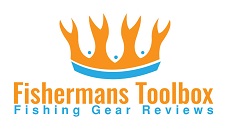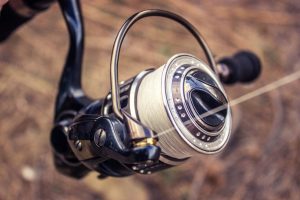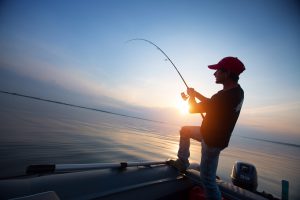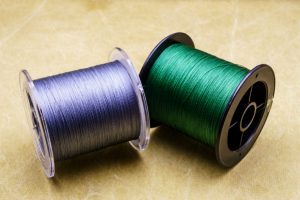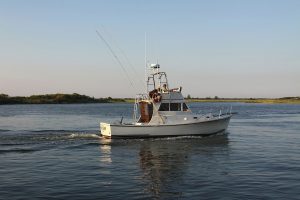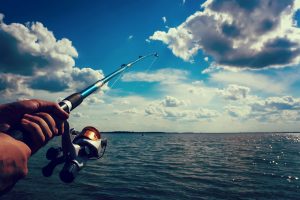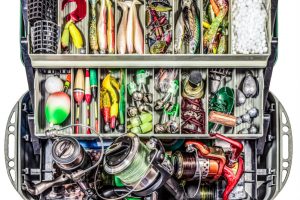A Fast and Comprehensive Guide to the Best Fish Finders
Do you want to go fishing? Are you ready for hours of waiting for that awesome catch? If not, then save time and enjoy fishing more by using a fish finder.
What is a fish finder? This is a device that provides help when it comes to searching and tracking fish beneath the water. It makes the whole procedure and hobby of angling faster and easier. The ability to track down fish is helped by the various features and functions that make up a fish finder. In this article, we are going to discuss how the whole thing works.
The fish finder is an electronic device and this means that it requires electrical power to operate. The amount of power determines the depth range of the fish finder. The deeper the water is, the more power is needed in order to meet the demand of such depths. A unit that can deliver a hundred watts can go up to a depth of 600 feet while those that deliver over a hundred watts can take on as much as 1,500 feet.
Once an electric impulse is produced, the transducer will then take over and do its job. The transducer transforms electrical energy into sound energy. This sound energy is then transmitted through the water with the help of Sound Navigation and Ranging or SONAR technology. It has the ability to reflect audio beams beneath the water to track fish within the vicinity together with several other details like weeds, rocks and sand. Depending on the capacity of the transducer to produce a single or several beams, these reflected beams will differ.
Following the strengthening of signals, the details are now ready to be shown. Users will then view and acquire all the gathered information on the display by means of the provided Fish ID icons which are translated in arc forms. However, they might not show up visibly due to mediocre sensitivity conditions.
To maximize display activity, users may have to look for the best fish finder with an excellent LCD monitor that has plenty of pixels. Image resolution differs depending on the pixel capacity; so the higher the pixels, the better the resolution.
Users can also search for water details like temperature, depth, range, salinity, and other related things. All of those mentioned factors are crucial when it comes to finding your target. Keep in mind that the best fish finder can only provide assistance—like any other device, it will still need your input.

Selecting a Fish Finder
Fish finders utilize a certain kind of technology called SONAR which stands for Sound Navigation and Ranging. It is composed of 4 components: the transducer, transmitter, display and receiver. SONAR operates by conveying an electric impulse from the transmitter and transforming it into a sound wave by means of the transducer, which in turn sends the sound wave under the water.
As soon as the sound wave hits an item, it bounces off of the item and conveys this reverberation back to the transducer. The transducer then transforms the reverberation back into an electrical signal. The receiver boosts this signal and transmits it to the screen to show users the gathered information.
Plenty of beginner anglers or fishermen who want to take advantage of a fish finder often ask how they should choose a model that will fit their preferences and needs.
There are 5 key things to remember before making those buying decisions.
Transducer
There are two kinds of transducers; single frequency transducers and dual frequency transducers. The former is recommended for lakes and shallow fishing spots while the latter is meant for deeper fishing locations. Dual beam transducers are the same as dual frequency so do not get confused.
Power
Overall, the higher the power of a model, the more effective and efficient it will be. High-powered models are more expensive and should be considered an investment. You can save up and opt for a high-end unit if you plan on angling and fishing for a long time. Keep in mind that high-powered model can still provide users with excellent imaging even in shallow water.
Depth
The depth that a fish finder is capable of is related to the quality and the power of the transducer. Expensive models can get through the water in a more effective manner.
Remember that the depths that are provided in the product’s specs are targeted for clear water. Dark and salt water can limit the depth that the SONAR can get through.
To be safe, always buy a fish finder model with a depth range of around 10 percent higher than what you needbecausea higher depth range will help the unit in dark or salt water environments.
Screen size
Fish finder displays range from 4 to 7 inches. Several models are even bigger than those dimensions. A bigger screen of course means a higher price. One benefit of a bigger screen though is the data on the screen can be easily read even under glaring sunlight.
Screen resolution
The screen resolution refers to the clearness and clarity of the image. Higher resolutions mean better images. If you want a fish finder that can handle bright sunlight, opt for color screens since they are easier to read. Then again, higher resolutions mean a higher price tag.
Now that we are finished with the common factors, we will now discuss some advice on how to select the best fish finder.
Choose the best quality fish finder that your money can buy. Of course, the budget you allot for this piece of technology is completely up to you.
Next, think about the locations where you plan to fish the most often. Do you plan on taking your hobby to coastal areas or lakes? Do you plan on utilizing the fish finder on your own boat, or will you depend on rentals every time?
The answer to these questions will often let you know if you are in need of a fish finder that can be fastened or one that requires drilling, or you need a model that will work best in deep water or shallow water.
If you are in need of a fixed-mount model, you will then decide whether you need a hull transducer or a ransom mount transducer. If you want something more affordable and easy to install, you may opt for a transom mount transducer. You can buy one in dual or single frequency units. However, keep in mind that they operate best in calm, steady water and are inefficient at over 10 knots.
Hull transducers are recommended for their performance and better clarity, but they can be a challenge to install and they are far more expensive. For precise readings though, a hull transducer with a dual frequency is recommended for offshore fishing and fishing in deep, freshwater locations. Hull transducers also respond well to high-speed fishing.
What About GPS Fish Finders?
Fish finders may sound too good to be true so you might expect there to be a catch. However, you do not have to be concerned about this since they have proved to be a big help to top anglers and fishermen.
Some may say that these units are quite pricey but all in all, they are great investments especially if you fish for a living or are a proud angler. These days, there are fish finders available with GPS technology. In terms of GPS fishing, the performance is different from common GPS units, but the mechanics involved are quite similar.
GPS has a group of maps that typically manage a wide location, like for instance continents. The technology presented by GPS offers all of the information for the majority of widely-used fishing areas. Apart from distinguishing fish, SONAR technologies are utilized and several can distinguish other items underwater like weeds, rocks, and other nautical creatures.
GPS fish finders are recommended for individuals who are still in the planning stages of their angling/fishing expeditions. It makes all of that location planning easier since all users have to do is download the current maps and location information to check on fishing spots that are close by.
The map will get users covered regardless of the location of the fishing spot whether it’s a lake, coastal area or a river. These GPS models include a feature that allows users to save locations so they can return to the same spots for fishing.
GPS fish finders also show thermoclines which are efficient when it comes to plotting areas that have warmer or cooler water temperatures. These fish finders with GPS are the real deal and they can provide users with helpful results as soon as they are familiar with its workings.
Image |
Product |
Price |
Rating |
| Garmin 010-01550-00 Striker 4 Bbuilt-in GPS Fish Finder | $$ | 4.4/5 | |
| Venterior Portable Wired Fish Finder | $ | 4.1/5 | |
| Deeper Smart Portable Fish Finder | $$ | 3.6/5 | |
| Humminbird 409610-1 Helix 5 Fish finder | $$$ | 3.9/5 | |
| Lowrance 000-12635-001 Hook-3X Sonar | $ | 4.3/5 | |
| Eoncore Portable LCD display with LED back-lighting Fish Finder | $ | 3.5/5 | |
| Signstek FF-003 Portable Fish Finder FishFinder | $$$ | 3.9/5 | |
| HawkEye FT1PX FishTrax Portable Dot Matrix Fish Finder | $$ | 4.4/5 | |
| Lucky FFW-718 Wireless Portable Sonar Fish Finder | $ | 4.1/5 | |
| Humminbird 409690-1 PiranhaMax 197C DI Color Fish Finder | $$ | 3.8/5 |
5 of the Best Fish Finders
Here is a small list of the most popular fish finders available in the market today. They are sought-after due to their features, performance, and functionality. Check them out and choose a favorite. Make this guide your reference when looking for the perfect fish finder model.
Garmin Striker 4 GPS Fish Finder
The Garmin Striker 4 is a durable fish finder that includes important features like a CHIRP sonar system and a GPS feature. If you want a budget fish finder that really works and has the important features you need, then this one is worth checking out.
This device lets users find those elusive awesome fishing spots that you would normally have a hard time looking for. It includes an HIRP 77/200 kHz sonar transducer with 200W RMS of transmission power.
Take advantage of the item’s CHIRP sonar to make your angling activities more satisfying. Switching between the depth range scales will also allow you to acquire continuous imagery.
Pros
- Durable, compact design
- Waterproof with IPXY water rating
- Includes CHIRP sonar
- Highly sensitive GPS
- Includes integrated flasher
Cons
-
- Does not work well with sunlight glare
Venterior Portable Wired Fish Finder
Venterior’s portable fish finder is one of the most affordable items of its kind in the market today. This is a model that is capable of distinguishing and showing on its screen rocks, weeds, grass and sand under the water.
It is also capable of reading from 0.6 meters up to a hundred meters. It provides a 45-degree beam and the majority of customers who tried the product said that they were able to discover excellent fishing spots due to this device. While it ranks low on the water-resistant scale, this is a budget model that still operates quite well for its price.
Pros
- Affordable model
- Displays items underwater like rocks, sand, and weeds
- Includes a distinct fish alarm
- Has depth readings of up to a hundred meters
- Can be used in different water locations
- Recommended for beginners
Cons
-
- Not adept at doing readings in colder environments
Deeper Smart Portable Fish Finder
The Deeper Smart fish finder model is a compact, travel-friendly wireless sonar device which has the ability to link up with smartphone operating systems like Android and iOS. Apart from this feature, the product also includes plenty of interesting aspects that will surely pique the interest of avid anglers.
The device is designed and produced for exploring the water in order to discover excellent fishing spots. It can also be used as a fixed fish finder as well.
One can just fasten the device with the fishing line then throw it in a recommended distance. Following that, users can reel bit by bit and the unit will begin its scanning and surveying duties to deliver information to your smartphone.
Pros
- Excellent portability
- Sleek compact design
- Floats effortlessly in the water
- Saltwater-ready
Cons
-
- Battery is not removable
- Has a low-depth reading constraint
Humminbird Helix 5 GPS Fish Finder
The Humminbird Helix 5 makes use of a 5-inch display to take advantage of the GPS and Side and Down Imaging features. It has a low price for a gadget decked with these impressive features.
The model has a high-res display too at 800 × 480 pixels with a 256 color TFT display. Although several units from the Helix lineup are capable of having Down and Side Imaging, they are not networkable at all.
The Helix 5 can be mounted to the water vessel by utilizing a plastic gimbal mount. If you want something advanced at a lower price for your fishing activities, you can opt for this model.
Pros
- Accurate internal GPS Chart Plotting
- Built-in UniMap cartography
- MicroSD card slot for saving maps and waypoints
- Vivid screen display
- Dual Beam Plus, Side Imaging and Down Imaging sonar
Cons
-
- Several customers reported mediocre image quality
- Slow GPS according to some customers
- Low-quality mapping features according to a few customers
Lowrance 000-12635-001 Hook-3X Sonar
The Lowrance Hook-3X is believed by some to be one of the best in the industry. It includes high-tech features that are not usually found on more affordable models.
It provides quality color images together with other excellent factors which make it a top choice among anglers and fishermen. This compact and portable fish finder can be utilized regardless of what time you fish, whether you pursue your hobby in the daytime or at night.
The model has two frequency systems for its hunting/scanning technology and by utilizing both frequencies users can look all over their vessels and underneath the water.
Pros
- Has Advanced Signal Process
- Clear 320 x 240 resolution, bright color display
- Portable and travel-friendly
- User-friendly, ideal for beginners
- Two frequency systems
- Low price
Cons
-
- Alarm interrupts with depth tracking
- Accuracy issues on shallow water
Conclusion
The fish finder is a device which provides plenty of help to anglers and fishermen. It can locate and track fish lurking underwater and it can also provide information about the landscape and other items beneath the water.
Plenty of traditional fishermen take in the pleasure of not knowing where fish are swimming and the whole waiting thing is a challenge for them. They wait and while away the time hoping their bait will attract their target.
Others are more comfortable with the idea of having a fish finder on their side. These units make use of SONAR technology to find and gather information about moving and stationary items underwater.
There are plenty of fish finders available with its merits and setbacks. There are features and factors that one has to consider when selecting a fish finder. It is crucial to determine which kind of fish finder you need—whether you need one that is fixed mount, portable, has a dual or single beam transducer.
There is no point buying an expensive, high-tech piece of equipment if it does not meet your needs. As soon as you have mulled over the different factors, you will be able to make an informed decision and choose the right fish finder model that you need.
